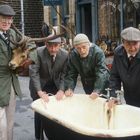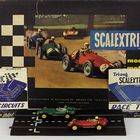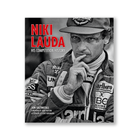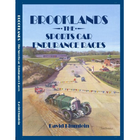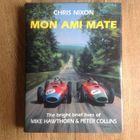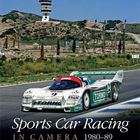As we stumble to the end of a remarkable year, it’s time to think about Christmas presents. And not just what you are going to buy grandma, but also we all need to be ready to answer that ever-present question; “so what would you like for Christmas?” Here is a little bit of help, as we look through some of our favourite books of 2020…
The All-American Hero and Jaguar’s Racing E Types by Phillip Bingham
Briggs Cunningham, his middle name was unbelievably ‘Swift’, didn’t really get into motor racing until he was 40. He was the heir to the Proctor & Gamble fortune and, up until then, he had spent most of his time in the ultra-competitive world of sailing. But on his fortieth birthday he inherited all the fortune and decided motor racing was what he really wanted to do. Briggs Cunningham Snr had made the first part of his fortune in banking in Cincinnati before investing in, firstly, railways and then Proctor & Gamble, both of which made him extremely, fabulously wealthy.
Phillip Bingham’s new book “The All-American Hero and Jaguar’s Racing E Types” may not win any awards for the snappiest of titles but, nevertheless this large format book covers all aspects of Cunningham’s motor sport life, and much more.
If I am to make a criticism to make (and it is churlish to do so) it would be that the subject matter of the man and his cars is so broad. Cunningham’s life is enthralling enough to fill a book such as this on its own, this charming, clever, good-looking and incredibly rich man had it all. Indeed when motor racing lost its sparkle for him, principally because he was competing against factory teams which made racing too costly even for his deep pockets, he went back to sailing, had a new yacht built and captained it to win the Americas Cup!
The history of the E Type in international motor sport is covered in depth too. From that first race at Oulton Park in 1961 when Graham Hill won in Tommy Sopwith’s car, registered ECD 400, scarcely a month after the car’s sensational launch at the Geneva Motor Show, right through to the production of the lightweight E Types with which Briggs Cunningham was so closely involved.
But no story about Briggs Cunningham in motor racing would be complete without the build-up to those heady Jaguar years. In 1950 he had entered two Cadillacs; one was a modified Series 61 Coupe. The second was basically the same car mechanically but with a less-than-beautiful streamlined body designed by the Grumman aircraft company for maximum speed down the Mulsanne Straight. Author Bingham notes that both cars stole the hearts of the French public, the softly-sprung ‘Coop’ becoming known as the ‘Clumsy Puppy, whilst the name given to the streamliner has stuck forever, Le Monstre.
The team went on to build their own cars and our intrepid hero became one of a select band of men to have driven a car bearing his own name at Les Vingt-Quatre Heures. Cunningham had entered many different cars over the years, including Ferraris, Maseratis and even Coopers before cosying up to Jaguar, first of all with the long-nose D Type, in his traditional American colours of white with twin blue stripes. Once this time was over, he was drawn further into the Jaguar fold by the E2A, effectively the prototype E Type. The Coventry marque were keen to prove their still-secret car in competition but did not want to risk a very public failure, hence they persuaded Cunningham to take on the car and race it under his banner. This he did both at la Sarthe and back home in the US, with mixed success but by no means was the car a failure.
The next step was to the E Types and then, of course, the glorious lightweights and the book covers this part of the story in fine detail. There is inevitably the wind-down part of the book where the Cat becomes outpaced by more modern machinery. The final parts of the book deal with more modern times, highlighting the ‘Cunningham Collection’ within the Revs Institute in Naples, Florida as well as a fabulous present-day photographic record of cover star 9023 DU, a car which left Browns Lane, Coventry as a standard left-hand-drive E Type roadster and became one of the most iconic of all racing Jaguars.
You will probably think that this book is something that will take a while to read, however that’s not the case. I found the primary subject matter intriguing and the little byways about the personalities involved fascinating. Whilst you could never read this 287-page book in a single sitting, let alone enjoy the fabulous photographs, but you will find this one hard to walk away from.
Phillip Bingham’s new book “The All-American Hero and Jaguar’s Racing E Types” costs £60 and is available from PorterPress.co.uk. ISBN: 978-1-907085-81-9
Shadow, the Magnificent Machines of a Man of Mystery by Pete Lyons
I have been a fan of the writings of Pete Lyons for many years, in fact from the 70s when he wrote what for me is still the definitive set of Grand Prix reports for Autosport magazine. His new book; “Shadow, the magnificent machines of a man of mystery” keeps up the standard. Lyons, who unbelievably turned 80 this year, is not afraid to put his personal slant on things and to express an opinion or two.
Don Nichols, the man who created the platform for the Shadow racing cars seems to have been, shall we say, not universally popular, with many in motorsport, a somewhat cavalier attitude to paying suppliers and staff being a regularly repeated gripe. He seems, according to Lyons, to have revelled in the ‘man of mystery’ soubriquet and indeed to have cultivated it. Indeed, the very name of the cars seems to have emerged from an American TV series which, as its central character, featured a mysterious man in a big hat and a cape, sound familiar?
 That Nichols was an all-action hero is without doubt. Anyone who parachuted into Normandy on D Day gets my vote there, but June 6th 1944 wasn’t to be the glorious adventure he expected. He was a ‘pathfinder’, part of an elite force who were parachuted into the drop zone, a couple of hours in advance, to set out radio beacons to mark out the landing grounds for the 101st Airborne Division. Nichols team drew the attention of considerable artillery fire and he was injured by a piece of shrapnel which slammed into his forehead. Wounded he was taken to a medical tent which then, in turn, came under fire and he was wounded again, this time in the leg.
That Nichols was an all-action hero is without doubt. Anyone who parachuted into Normandy on D Day gets my vote there, but June 6th 1944 wasn’t to be the glorious adventure he expected. He was a ‘pathfinder’, part of an elite force who were parachuted into the drop zone, a couple of hours in advance, to set out radio beacons to mark out the landing grounds for the 101st Airborne Division. Nichols team drew the attention of considerable artillery fire and he was injured by a piece of shrapnel which slammed into his forehead. Wounded he was taken to a medical tent which then, in turn, came under fire and he was wounded again, this time in the leg.
A recovered Nichols was then part of Operation Market Garden, the Arnhem offensive, where again he was wounded ‘several times’, before being part of the Battle of the Bulge in Belgium, ironically very near the Spa Francorchamps circuit.
After this the story gets a little hazy. He ended up in Japan, now demilitarised as part of post war reparations but still a hotbed of international intrigue. Pete Lyons has obviously done his best to gain some information but Don Nichols, shortly before his death, was still guarded about what he did. ”I can’t talk about that”, being his only real comment. Is this the story itself or is this simply embellishing the ‘man of mystery’ persona. We will never know the full story (which is exactly what he would have wanted0 because he took that information with him when he died in August 2017.
Don Nichols wasn’t an engineer, and all the Shadow cars were designed by people hired to do the job, whether they always got paid is another matter. He was however a visionary and had clear views about just how the cars should look and behave. The first Shadow, designed by Trevor Harris, was what became known by the nickname of the Tiny Tires Car. This Can-Am creation was designed originally around 10” front wheels with tyres created specially for the product by Firestone, which was in itself a feat for such a minute, new team. Pictures show this car to resemble a very large Chevrolet engine strapped to a go-kart, with all the associated degrees of safety….. or not!
For 1970 the first Shadow appeared as a race ready car, he was yet to gain UOP sponsorship, the paintwork was red, partially in deference to Firestone’s huge commitment to the project. It was George Follmer who tamed the beast first of all, with Vic Elford adding his not inconsiderable talents to the programme once Follmer had moved on.
It was not until 1971 that Universal Oil Products came on board and introduced their stark white UOP brand to the Shadow’s now-black flanks, creating one of the most dramatic liveries ever seen in motor sport. Shadow Cars abandoned their Tiny Tires concept in 1972 and created a much more conventional Can-Am leviathan, the Mark 3, the DN nomenclature was yet to feature.
Don Nichols was a very ambitious man and by 1973 he had decided to double up on the team’s activities (and workload) by moving straight into Formula One. There was no gentle build up via the lower formulae. Oh no, this was Don Nichols BAM! Straight in. A satellite team was set up in Northamptonshire with Tony Southgate designing the cars and Jackie Oliver doing the driving (and much more besides) whilst reporting back to the US. Just to add to the burden, Don also did a deal with Graham Hill, whose driving days were coming to an end, to supply a car to be run independently by the two-times world champion in the colours of Embassy cigarettes.
Formula One and Can-Am challenges ran side by side but, although Nichols had made a fortune whilst working in Japan, the costs were getting astronomical. As the sports car series fell into decline, instead of concentrating on Grand Prix racing, he used Tony Southgate’s DN5 F1 car as the basis for a stateside F5000 campaign, continuing to stretch resources and manpower.
Pete Lyons deals sympathetically with the later years of Shadow, post UOP. The huge talent that was Tom Pryce, lost in a senseless accident in South Africa at the wheel of DN8B in 1977, is not dwelt upon but acknowledged with sensitivity and compassion.
Shadow was a force to be reckoned with in the re-launched Can-Am in 1977/8. These cars were all effectively re-bodied F5000 cars, where Shadow had been very successful in previous seasons, and that success continued. However by 1978 the writing was on the wall. Indeed Lyons entitles Chapter 18 simply as ‘Decline’. There was a palace revolt, which saw most of the key F1 players go off to form Arrows F1. They built a car which was so similar to the car Tony Southgate had designed for Shadow as the DN9 that Southgate and his cohorts were prohibited, by the result of a court case, from running their FA1 in competition.
The Shadow story deserves to be told and Pete Lyons has done a superb job of getting behind the scenes of a man who revelled in being enigmatic. The fact that Lyons had the opportunity to sit down with Nichols over a considerable time, close to the end of his life, gives you the feeling that Nichols wanted to tell the tales from his point of view.
Shadow – the Magnificent Machines of a Man of Mystery by Pete Lyons is available from Evro Publishing price £75.00. evropublishing.com
The ROFGO Collection by Doug Nye.
You would have thought that everything which could be written about the Rofgo Collection had already been published, but this new book from Porter Press is in, quite simply a different league.
Porter Press have a reputation for producing very high quality books on a variety of subjects, and they are without doubt, the right partners for this undertaking. The fact that they have managed to persuade Doug Nye to research and write the text is a further icing on the cake. And (to continue the baking analogy) the great big cherry on the top is the brilliantly executed photography of every vehicle in the collection, including the huge JW Gulf race transporter.
Doug Nye hits the perfect spot with this narrative. He is informative without being 'preachy' and shows his knowledge and research without in any way being patronising. He explains how Rofgo founder Roald Goethe (the Rofgo title is derived from the oil trader's own name) fell in love with the pale blue and orange cars in his youth and gradually acquired cars until he realised he had a 'collection'. Together with Adrian Hamilton, son of 1953 Le Mans winner Duncan, he put together this impressive ensemble. Every car, and there are over thirty of them, in the collection, from Mirage M1 to Aston Martin GTE, are covered in depth, detailing their individual history from their race debuts right up to the present day.
This is a living and working collection, with many of the cars having a new life at the finest historic events in the world, and both Goethe himself and Rofgo professional Stuart Hall have seen success in various cars from the collection. But it's not only the high achievers which rate a place at the Rofgo Collection, with the ill-starred Mirage-Westlake and the little-known Mirage M5 Formula Ford also having their own space in the book. Whilst there are many period photographs in the book, it would have been nice to see the cars in the various different liveries as other owners ran them in their post-heyday guises, prior to being brought back to their original blue and orange.
As you would expect, Doug Nye has interviewed many key players about their own involvement in the evolution of some of the cars and, where those individuals are no longer with us, extensive research into interviews, magazine articles and books from the period bring a depth of knowledge to the reader which could so easily have been overlooked.
But it would be wrong to assume that this is a book only about those glory days of the '60s and '70s. The book comes right into the twenty first century with the cars run by various teams and drivers, notably by Roald Goethe himself, including his Le Mans Aston Martins, one of which is preserved in its road dirt-encrusted state, looking forever as if it has just crossed the finish line at La Sarthe.
Each car is covered individually, and hence this is a very easy read. Whilst it is hard not to try to read the book from cover to cover in just a few sittings, it is easy, and probably more worthwhile and enjoyable, to take each listing car by car. There is a comprehensive index at the end of the book, detailing individual lifetimes of the cars for those of us who want to delve still further.
The ROFGO Collection by Doug Nye is available direct from Porter Press priced at £75 (porterpress.co.uk).; There are only 900 of these books available worldwide and they are sure to be in high demand. If you really want to push the boat out, there is a very limited edition version on high quality art paper and signed by both the author and Derek Bell at £400, this version being limited to just 30 copies.
The demand for books of this quality has been high, particularly of late, but the combination of subject matter, quality of production and the superb writing, put this at the very forefront of any motorsport book collection. Book of the Year? Could be...
Formula One, the Knowledge by David Hayhoe
This is the second edition of Heyhoe's all-encompassing book which covers Formula One facts from 1950, so therefore all of it! Indeed the book should come, not with a dust jacket but instead with its own mini anorak, such is the unbelievable depth of the information in this book. Do you want to know which manufacturers won the opening race of the season but didn't win again that year? Turn to page 357. (The answers are BRM in 1966, Cooper in 1967, Brabham in 1970 and Lotus in 2013).
 Sports fans tend to fall into one of two camps. Those who like the atmosphere and the drama versus those who enjoy the statistics and the facts. It is a well trodden path in the HistoricRacingNews.com offices because Paul Tarsey is very much a 'heart' enthusiast whilst Paul Jurd is a statitician. Both love their sport and simply get different things from the history of our sport. We know whose bookshelf this will end up occupying! That said, there is almost infinite information in this book for any fan who wants to start any Formula One conversation with "did you know...".
Sports fans tend to fall into one of two camps. Those who like the atmosphere and the drama versus those who enjoy the statistics and the facts. It is a well trodden path in the HistoricRacingNews.com offices because Paul Tarsey is very much a 'heart' enthusiast whilst Paul Jurd is a statitician. Both love their sport and simply get different things from the history of our sport. We know whose bookshelf this will end up occupying! That said, there is almost infinite information in this book for any fan who wants to start any Formula One conversation with "did you know...".
For example.... Section 1134 deals with teams who led races in their final season. This list throws up some oddballs; Spyker led six laps in 2007 and Lancia 13 in 1955 whilst Stewart are almost at the top of the list having led 84 laps in 1999 before the team became Red Bull. But the outstanding winner here is Brawn, who led 405 laps in 2009, their one and only season, (before morphing into Mercedes). Great pub quiz stuff.
Surprisingly for a book of statistics, the photographs are excellent and are printed exactly as they would have appeared in period which, for anyone who remembers racing in the fifties, sixties or seventies, is exactly how we want to see them.
are going to be as dry as dust but it draws the reader back time and time again to find out just one more nugget of information. Just so the next conversation can start with those immortal words "did you know....."
Veloce Publishing have produced an excellent book here priced at £60.00 online at Veloce.co.uk. ISBN: 9781787112377.. Hardback • 21x27cm • 544 pages • 90 pictures
Shelby Cobra Daytona Coupe, the autobiography of CSX2300 by Rinsey Mills
Porter Press have produced a brilliant series of books called the ’Autobiography of Great Cars’ and this new release is number 14 in that series. The book ‘Shelby Cobra Daytona Coupe’, the autobiography of CSX2300 by Rinsey Mills, is inevitably a huge and fascinating tome and the book covers all of the Shelby Daytona cars.
Shelby only built five Coupes so their histories are closely intertwined, but the story starts with the early days of the original AC Cobra and the book goes right up to the present day. The story of how Carroll Shelby originally had the idea of putting a meaty American Ford V8 into the very British AC Ace is well trodden ground but nonetheless sets the scene excellently for what is to follow. 
Largely the book is chronological, starting with explanations of the team Shelby built around himself and explaining the small group that put together these brilliant cars from concept to reality. The explanations of the evolution of the Daytona coupe are intriguing and allow us to understand that with Ford’s help and blessing, the new design came about. However, Ford were reluctant to fund the slippery coupe in the beginning, their attention had become diverted to the GT40 project, and it was Shelby’s tyre supplier who came up with the money to start the ball rolling.
The Cobra in its original form was being outpaced and outclassed by the red cars from Maranello, particularly the Ferrari 250 GTO, and Carroll clearly understood the need for something with a higher top speed and that the aerodynamics of the somewhat agricultural Cobra were never going to supply this, hence the beginning of the Daytona story. Five cars were ultimately created and Mills explains in fine detail the gestation of these beautiful race cars with the original car CSX2299 being the first off the line, built to Peter Brock’s iconic design. Another piece of pub-quiz trivia is that all the ‘proper’ Cobras had CSX chassis numbers. This came from the very first car to be sent from AC’s Thames Ditton factory to Shelby, the CSX simply standing for ‘Carroll Shelby Export’.
The book is liberally peppered with fabulous photos from the era and anybody on either side of the Atlantic who witnessed these cars racing in period will be transported back very quickly to Daytona or to Brands Hatch and all points in between. The early days of CSX2300 are explained and are intertwined in some detail with both the highs and lows of the Daytona project.
Photographs from Le Mans in 1964 take you straight back to those times, the blue with white striped Shelby cars lining up against Ferraris, Ford GT 40 years and Porsches. That outing resulted in a fourth overall and first in class for CSX2299 with Dan Gurney and Bob Bondurant at the wheel and sets the scene for the remainder of the year.
Particularly interesting are the photographs from the Tour de France of 1964. A little covered event but when we come to look back at the start in Lille, in northern France, and races at Rouen, Reims and Le Mans, the Cognac mini circuit, then to Grenoble, off to Monza in northern Italy and then finishing in Nice must have been a superb spectacle. The photographs which accompany this particular chapter are utterly superb and the author must be congratulated on putting together a record of this amazing and often overlooked event.
The roles of Carroll Shelby and Peter Brock are explored in some detail but so is that of Alan Mann the English racing enthusiasts who had entered cars for Ford in UK and European saloon car racing. He was contacted by Ford to take the weight from Shelby who by then was heavily involved in the GT 40 project and hence we saw Alan Mann Racing being the entrant in Europe of these cars, now in Mann’s beautiful red and gold colour scheme, covered in some detail. As people like Ford of France became involved the cars changed from their traditional blue and white to a number of different liveries.
However most motor sports enthusiasts will agree that this is one of the most beautiful race cars imaginable. When you think that's the most lusted after race car of all time is the Ferrari 250 GTO, they built 39 of those (of which all 55 still exist!) Whereas the Shelby Daytona is rarer with only five chassis is ever completed.
The book talks about the main drivers in detail Bob Bondurant Jochen Neerspach, Alan Grant (interestingly because he is little known in the UK) Ed Leslie Joe Schlesser, Andre Simon, Jack Sears and Sir John Whitmore are all featured, with in-depth racing biographies of each of them.
it would be a mistake to end the story in 1965 and this book brings the story up to date with stories of antics since then such as Goodwood Revival and various concours events as well. Sadly, the extreme value of each of these cars means we are unlikely to see the heroics performed by Tom Kristensen and Kenny Brack at the Sussex circuit any time soon.
You don't need to be an outright Shelby or even Cobra fan to enjoy this book. It is as much a history of 1960s GT racing as anything else and a thoroughly good read because of it.
The book is available from Porter Press at porterpress.co.uk or from all good motoring booksellers priced at £60.00. ISBN: 978-1-907085-42-0
Jaguar D Type. The story of XKD526 by John Elmgreen
You may think that there are already enough books about the D-Type Jaguar but this new release from Porter Press International comes at the subject from a somewhat different angle. Instead of taking the well-trodden path of discussing the famous long-nose 'works' superstar cars, author John Elmgreen delves into the considerably less famous XKD526 'customer' car.
 The car was delivered new to Australia in late 1955 and immediately started an active and varied competitive life. First owner Bill Pitt entered the car in the Leyburn Sprints in February '56 for one of Australia's few female drivers, 'Geordie' Anderson, where she clocked an impressive first time out flying quarter mile at 135.2 mph. Albert Park is now famous as the home of the Australia Grand Prix but there has been racing held at the venue for many years. Car owner Bill Pitt finished the racing year in 1956 with a shunt at the fledgling venue, and although the only things he hit were straw bales, there was a fair amount of damage, albeit superficial.
The car was delivered new to Australia in late 1955 and immediately started an active and varied competitive life. First owner Bill Pitt entered the car in the Leyburn Sprints in February '56 for one of Australia's few female drivers, 'Geordie' Anderson, where she clocked an impressive first time out flying quarter mile at 135.2 mph. Albert Park is now famous as the home of the Australia Grand Prix but there has been racing held at the venue for many years. Car owner Bill Pitt finished the racing year in 1956 with a shunt at the fledgling venue, and although the only things he hit were straw bales, there was a fair amount of damage, albeit superficial.
By the time the car reappeared in 1957 it had a reprofiled nose section, the famous oval air intake replaced with a much squarer and, it has to be said, less attractive, 'face'. The British Racing Green paintwork had been changed to metallic gold as well. Thankfully by the end of the season common sense had prevailed and BRG was again the colour of choice, although the unique front end was still there.
XKD526 was in for another change of colour though, as it evolved to the yellow with a blue stripe of the Leaton Motors team. The company was a successful retailer of road cars and one of their salesmen persuaded them to buy the car for him to race under their banner. That salesman was none other than Australian racing legend Frank Matich, embarking on what would become a very successful career in motor sport.
Over the next few seasons the car continued as part of the Leaton Motors stable but became less and less competitive. In an effort to extend its racing life, a number of modifications were tried, not least a couple of different hard top interpretations of the Malcolm Sayer bodywork, photographs of which appear in the book and are strangely appealing.
In 1967 the redundant racer was pensioned off and was eventually bought by Keith and Sandra Berryman who restored the old girl to her original state.... or nearly, because they added a Le Mans type fin to the headrest before entering '526' onto the concours circuit in Australia.
It was only in 2014 that she finally made the long trip home where a full nut-and-bolt restoration took place, returning the car to the condition in which it left Browns Lane all those years ago. Porter Press supremo Philip Porter is a well known Jaguar aficionado and he takes up the story from this point. The rebuild is covered in detail and the photography of the car as it exists today is stunning and highly detailed.
Porter Press International produce these 'Profile' books as a comparatively lightweight read with a correspondingly affordable £20.00 pricetag. For those people wanting a more in-depth D-Type biography PPI have published a book on the XKD 504 'Longnose' as part of the Great Cars series at £60.00. Each book appeals in a different way and are equally rewarding reads.
Kremer Racing by Michael Cotton, Ulrich Trispel, Robert Weber
The Kremer brothers, Erwin and Manfred, built, prepared and raced Porsches that won most of the top prizes in endurance racing over a period lasting nearly four decades.
The story of this magnificent team is told in a book titled Porsche Kremer Racing, published by Robert Weber’s German company Sport Fahrer. It’s a big book, heavy, fully illustrated, a complete history of one of the most successful private Porsche teams in history.
The Kremers began small, in 1962, building up a Porsche 356 they found in a scrapyard, operating out of a small workshop in Cologne. It was hand-to-mouth for years but they graduated to the 911, Erwin racing when he had some money, Manfred preferring to keep safe behind the pit wall organising the team.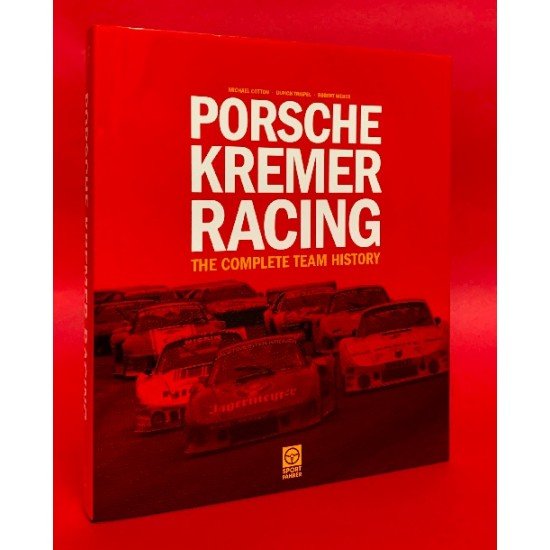
The breakthrough came in 1968 when Erwin, teamed with Willi Kauhsen and Helmut Kelleners won the Spa 24-hours in his tuned up 911L, homologated as a touring car, powered by a 210 horsepower Carrera 6 engine. Auto Kremer was in business, Kelleners winning five events in the European Touring Car Championship (which included the Eigental Hillclimb in Switzerland), though narrowly pipped to the title by Dieter Quester in a works BMW 2002.
By 1970 Porsche Kremer was a flourishing company, and Kremer Racing was becoming one of the most successful privateer teams in motorsport history. The big result that year was a magnificent class win at Le Mans, the rain-drenched event that provided Porsche with their first outright victory, with Kremer’s 911S finishing in seventh place overall, of 12 finishers, entered by Ecurie Luxembourg and driven by Erwin Kremer and Nick Koob.
If anyone didn’t yet recognise the name of Porsche Kremer, they did now. Kremer drivers won the prestigious Porsche Cup no fewer than 11 times between 1971, with John Fitzpatrick, and 1990 with Bernd Schneider. Fitz won the Cup three times, Bob Wollek four times, and a Kremer driver won the European Grand Touring title three times in succession 1990-1992.
By 1973 Auto Kremer had an annual turnover of a million D-Marks, selling perhaps 20 new Porsches a year, more pre-owned, always specialising in tuning and race preparation. On the track, Kremer Racing’s battles with Georg Loos, from the other side of Cologne, became legendary, the property dealer spending whatever it took to win races. Honours were fairly evenly shared in 1974-75, with Fitz swinging between the Kremer team, which he favoured, and the Loos team which outbid for his services. In the end, Fitz won the ’74 title with the Kremers having driven for both teams, so the bragging rights remained with the brothers.
The Kremer programme was stepped up in 1976 with the introduction of the Porsche 935 Group 5 machine with its turbocharged engine. Jochen Mass and Jacky Ickx led the factory’s Martini sponsored team, but the factory was astonished when the Kremers turned up for the opening round of the new World Championship for Manufacturers with a 935 that looked very much like the works car!
A friend had taken sneak pictures of the works car testing at Le Castellet, the bodywork had been mostly replicated, and Bob Wollek and Hans Heyer were booked to drive the 935K1. Yes, the first time the K suffix had been employed. It was not as fast as the works car, losing two seconds per lap, but it was quicker than the Schnitzer BMW CSLs by three seconds per lap. After six hours the Kremer Porsche, completely unsponsored, finished in second place six laps adrift.
The Kremer 935K1 remained in contention through the 1976 season, lost victory at Silverstone by having its turbocharger replaced in 17 minutes, but claiming second place to the Hermetite BMW driven by John Fitzpatrick and Tom Walkinshaw. BMW took advantage of a bout of Porsche unreliability to vie with Porsche for the title, and with two final victories, the Martini team clinched it by 10 points, the 15 earned by Kremer at Silverstone tipping the balance.
Kremer Porsche fought fiercely in the next two seasons, but their programme peaked at Le Mans in 1979 when their 935K3 became the outright winner of the 24-Hours, the first production-based car to do so, arguably, for 25 years. Klaus Ludwig was the winner, and he was partnered by the American brother’s Don and Bill Whittington, who bought the car on race morning in order to claim the start for Bill. “How much?” they asked, and told the price, took a suitcase to Manfred crammed with $290,000 in notes. It was drug money, but that was proved much later.
With unreliability afflicting the factory Porsches and the Cosworth powered Mirages, the contest to the chequered flag went in favour of the Jagermeister sponsored 935K3 ahead of the Dick Barbour 935 raced by Rolf Stommelen with Paul Newman with Barbour. Icing the cake, Kremer’s second 935 claimed third place overall in the hands of Laurent Ferrier, Francois Servanin and Francois Trisconi.
Barbour bought a K3 for the 1980 season and he and Fitzpatrick won the Sebring 12-hours outright (Fitz drove for nine hours). Fitz went on to win seven of IMSA’s 14 rounds to seal the title.
The 935K4 was built 1981, the most formidable Group 5 car ever raced. It was based on a tube frame chassis similar to that of the Porsche 936 and won the German DRM championship for Bob Wollek, who also collected the Porsche Cup for the fourth time, in 1981.
Barbour ran short of funds and Fitz launched his own race team in 1981, purchasing the same K4 while describing it as “a sensational car, the fastest 935 ever”. He and David Hobbs raced to fourth overall at Le Mans, winning the IMSA GTX class, and he scored three wins in the States to finish third in the IMSA series.
Time to move on, for the Kremers. Lacking a competitive car for Le Mans in 1981 they took an outrageous step and built a brand-new Porsche 917 which they dubbed K81, driven by Bob Wollek and sponsored by Mallardeau Residences. The frame was made of heavier aluminium tubes, to cope with the higher cornering forces obtained with modern race tyres. It, unfortunately, lacked top speed on the Mulsanne, and Wollek worked hard from midfield to reach 12th place at the end of his stint. Guy Chasseuil got the 917 up to ninth, good going on Saturday evening, but Xavier Lapeyre spoiled the show by running out and damaging an oil line, which led to retirement.
The Kremers had another new-build for 1982, building a Porsche 936 to factory specification, officially chassis 05 (below), which Rolf Stommelen drove in the DRM series, reaching the podium in each of his five starts.
Nor was that all. The brothers also built their own Group C car, the CK5, which they described as “a mix of 908/03 and 936 tube frames with a roof on top”. Don Whittington, Ted Field and Danny Ongais sponsored the car for an all-American debut at Le Mans, where they declared themselves “thrilled” with the handling, though it retired after two hours with a failed engine.
The CK5 was then assigned to Rolf Stommelen for some DRM events, including a win at Hockenheim, and a DNF with a failed starter motor at the World Championship race at Spa, where he was joined by young Stefan Bellof.
All this was marking time until the Kremers took delivery of their first ground effect 956, chassis 101, for the 1983 season. Australians Alan Jones and Vern Schuppan got the season off to a good start with a fifth place at Silverstone, and then, with Kenwood sponsorship, Mario and Michael Andretti, with Philippe Alliot, raced to third overall behind the Rothmans Porsches. The good times were back again! But the competition was getting stronger, as more teams got to grips with their new Group C cars, and the only outright win of the season was in a non-championship race at Diepholz, where Franz Konrad took the flag.
Let’s skip a year to 1985 when Kremer Porsche scored their first outright victory in a Group C World Championship race, with their new 962C in the Monza 1,000 Kms. Manfred Winkelhock and Marc Surer were the successful drivers in the race shortened by what the French would call a force majeure when strong winds felled a tree across the track at the Lesmos. Most teams had recently refuelled, were coming past the pits with foliage fluttering on the wipers and bodywork, then the flag came out… and Winkelhock was the first over the line! He was due in the next lap, good fortune for the Kremers.
Later in 1985, they suffered the most grievous loss as Winkelhock died as the result of an accident at Mosport, possibly resulting from a loss of tyre pressure. “The worst thing is when you lose someone,” remarked Manfred, and it was effectively the end of their season.
They signed Jo Gartner for the 1985 season, and the young Austrian promptly won the Interserie race at Thruxton, following up with a second-place, to Hans Stuck, at the Nürburgring. Eighth at Monza, third at Silverstone, the good times were back again, but not for long. Gartner tragically lost his life at Le Mans, his Porsche going out of control on the Mulsanne Straight for no clear reason, and the brothers were grief-stricken.
Later, the Kremers had honeycomb aluminium chassis made by John Thompson in England, and then a new chassis constructed of carbon-fibre.
The last Kremer sports cars were the K7, built in 1992, and the K8 which made its debut at Le Mans in 1994, and won the Daytona 24-Hours in 1995. With the iconic Gulf Oil livery, Derek Bell, Jürgen Lässig and Robin Donovan dove to an untroubled fifth place at Le Mans in 1994, and half a year later the K8 was triumphant at Daytona in the hands of Lässig, Giovanni Lavaggi, Christophe Bouchut and Marco Werner, making his debut with the team as a reserve driver, and impressing.
The Kremer story went on and on. They bought a GT1 from the factory for the 1997 season, it was not a success, either for the factory or its customers and reverted to the K8 for 1998, then switched altogether to a Roush Ford powered Lola B98 for the next three seasons. It just wasn’t the same.
Erwin died in 2006, Manfred retired to Spain, but later bought the Kremer assets. The team was reformed under new management in 2011 to campaign Porsche GT3 Cup cars and market their K3- retro styling kit, racing primarily at the Nürburgring until it folded quietly in 2018. It was a hell of an era! Many thanks to our colleagues at Daily Sportscar for allowing us to bring you this review of a new mighty tome on the race activities of long-time Porsche supporters the Kremer Brothers, written by Porsche expert Michael Cotton, Ulrich Trispel and Robert Weber:
‘Porsche Kremer Racing’ can be ordered from Hortons Books (hortonsbooks.co.uk) and costs £85.00 . It has 390 art-work pages, is fully illustrated, and weighs 3 kg!
Bookshelf Interview: Richard Jenkins, Author of Richie Ginther Motor Racing’s Free Thinker
We recently caught up with Richard Jenkins, author of the recently released Richie Ginther: Motor Racing’s Free Thinker to ask him about the new book and why he chose Ginther, who started 52 Grand Prix for teams such as Ferrari, BRM, Honda and Cooper, as the topic for the biography.
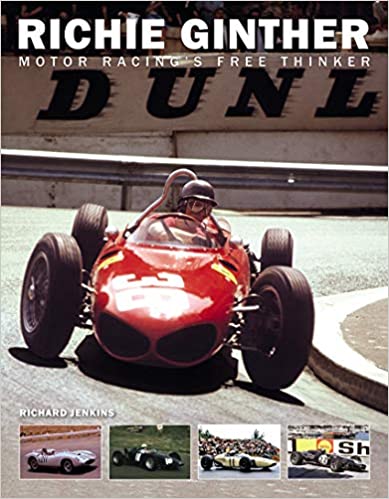 The American made his race Formula One debut for Ferrari at Monaco in 1960, finishing sixth, and a year later was part of one of the most famous races round the streets of the Principality, taking second place behind the privateer Lotus of Stirling Moss. His final F1 race was a one-off outing back at Monaco in 1967, where he failed to qualify an Eagle.
The American made his race Formula One debut for Ferrari at Monaco in 1960, finishing sixth, and a year later was part of one of the most famous races round the streets of the Principality, taking second place behind the privateer Lotus of Stirling Moss. His final F1 race was a one-off outing back at Monaco in 1967, where he failed to qualify an Eagle.
“I came to write about Ritchie through a series of events,” explained Richard, “his widow got in touch with me a few years ago, and it really led from there. Ritchie Ginther is remembered by people, I’ve never had to explain to anyone who he was, but that is where it stops, everybody thinks he was the guy who lived in a motorhome in the desert, went a bit crazy and died early.
“That seems to be all people define him as but I wanted to discover more about Ritchie the man, and as good a driver as he was, to try to reinvent him. Just because he chose to walk away from the sport and was never part of the historic racing scene, I felt he had been a bit forgotten about as he chose to live his life as he wanted to live it.
“It was all about reinventing him, and also to show people that he was better than possibly they thought, he drove in a dangerous era and he chose to survive first, drive second. That was his approach, and maybe he could have won more races, even a championship if things had gone his way, and I wanted to remind people of just how good he was.
“He really didn’t have much of a career before joining Ferrari, he went from having success racing sportscar in America to Formula One. He signed a contract in January and by May was at Monaco driving a Formula One Ferrari. He didn’t do Formula Two, he had one test in a Formula Junior, he had no build up in single seaters to his Grand Prix debut.
“He jumped into the car and in 1961 was part of that famous Monaco Grand Prix where he matched Stirling Moss lap after lap, which showed Ferrari what a talent he was. He later drove for Honda, and was amazingly not employed to win races but to develop the car, a job he had done at Ferrari and BRM, both of whom won championships when he was there. Even so, he gave Honda – and Goodyear – their first Grand Prix wins in Mexico in 1965.
“Richie chose to live life by their own rules, motor racing was a big part of his life, but then he moved on. In some ways the years after racing, and after he had stopped running his own team – seemed to have been his happiest period. He had time to do whatever he wanted to, and was involved in archaeology, recycling, was very interested in animals, and travelled widely.
"He was genuinely a multi-facetted and intriguing person.”
Richie Ginther: Motor Racing’s Free Thinker, is available from www.performancepublishing.co.uk for £27.00. 132 pages in Softback ISBN 978-0-9576450-5-9
Coachbuilt Cars. The Jaguar XK120 Ghia by Richard Heseltine.
A whole book about one specific car – and yes, car…not type of car – is never an easy task and we have seen examples that have got more than tenuously linked to their subject in places, but Richard Heseltine’s Jaguar XK 120 Supersonic manages to keep the right side of the line and provides some intriguing insight and context to unique vehicle. With a superb looking Italian body on a potent Jaguar chassis, the car was, and is a true head turner.
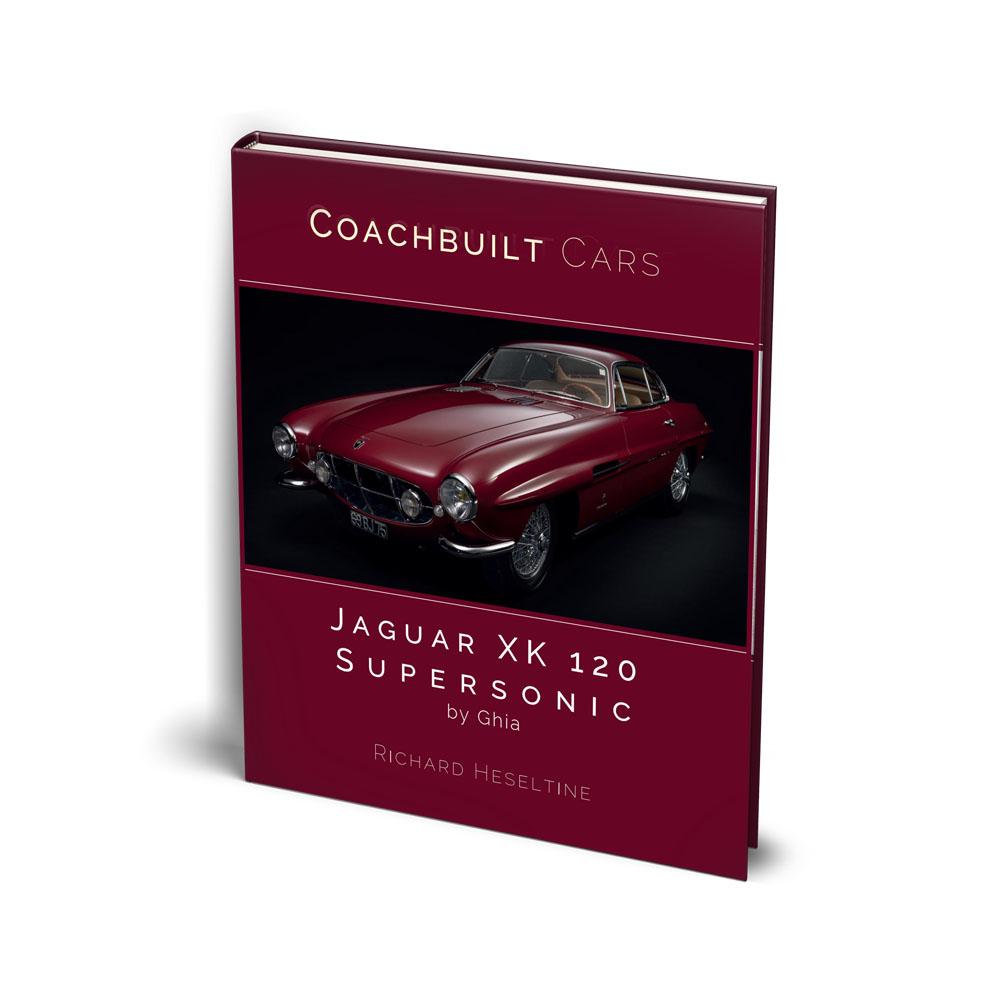 The first of a new series of books entitles ‘Coachbuilt Cars’ from Porter Press, Heseltine has dived deep into the history and context of the amazing looking XK120 Supersonic tracking the car from its conception in 1954 to the present day. The most powerful of a line of 19 cars produced by design house Carrozzeria Ghia, the striking modern lines of the XK120 Supersonic, far removed from the already good-looking donor Jaguar, somehow capture the optimism of the 1950s when it seemed science and engineering could solve any problem and prosperity was returning after the austerity of the recent war.
The first of a new series of books entitles ‘Coachbuilt Cars’ from Porter Press, Heseltine has dived deep into the history and context of the amazing looking XK120 Supersonic tracking the car from its conception in 1954 to the present day. The most powerful of a line of 19 cars produced by design house Carrozzeria Ghia, the striking modern lines of the XK120 Supersonic, far removed from the already good-looking donor Jaguar, somehow capture the optimism of the 1950s when it seemed science and engineering could solve any problem and prosperity was returning after the austerity of the recent war.
The history of the car starts in murky fashion, with the first owner – who had commissioned the Jaguar to be enrobed in coachwork by Ghia – turning out to be less keen on paying his bills than he had on ostentatious displays of grandeur. The XK120 Supersonic amazingly spent many years in storage before being acquired by a French Jaguar enthusiast, and in a later chapter the full trail of ownership is laid out, the car last being bought at auction in 2015 for $1.8m.
A star of the concours scene for many years, the car is now owned by an owner who appreciates the undeniable beauty of the car – its striking looks amply demonstrated by the high-quality studio photographs of the car that are a feature of the first part of the 108-page book.
The book looks at the history of the Ghia design and coachbuilding house, who produced vehicles ranging from the open-topped Jolly (a sort of Mini Moke style vehicle based on small Fiats) to some stunning sportscars and saloons. They ultimately became simply an advanced design office for Ford, where models of various cars bore the Ghia badge to indicate they were top of the range.
Several names in the Ghia line up receive acknowledgement in the book with their stories neatly told, while even the XK120 itself, whose sound underpinnings provided the basis for the car, receives detailed coverage. The section we came back to more than once were the pictures of the full restoration near the back of the book which saw the chassis taken back to bare metal, the whole process shown in two twin-page spreads of images.
We fully accept that technically the book falls outside our usual sphere of interest, but the striking looks of the XK120 Supersonic caught our eye and for any car enthusiast with a soft spot for the individualistic designs of the 1950s this is a great addition to the bookshelf. The onus is on quality rather than quality, the high-quality imagery allowed to shine on a heavy gauge paper and bound in a cover the same shade of paint as the original car!
108 pages with over 100 images, £35.00. Available from: www.porterpress.co.uk. ISBN: 978-1-907085-82-6
Niki Lauda - His Competition History by John Saltinstall
This is a book that is precisely summed up by its title, by dint of a lot of research Jon Saltinstall has listed out every race that Lauda took part in, usually with an accompanying pictu as qualifying and race positions and more often than not chassis number too. While by no means a biography, as a summary of the triple-world champion's races it is an impressive achievement, with text for reach race putting the raw data in context and even taking in the politics of the time, especially in relation to his Formula One career.
The book was a nine-year research project, and while the Lauda’s time in Formula One is well known and resources exist in copious detail to provide the data for the book, the hard work was obviously in tracking down his early career when Lauda was just another young racer with lofty ambitions. There is ample detail of Lauda’s first competition outing, at the Bad Muhllacken hillclimb in Austria in April 1986, his first competition mount a Mini Cooper S that he took to second in class – and the author even provides photographic evidence of how the organisers managed to spell ‘Lauda’ wrong in the event programme.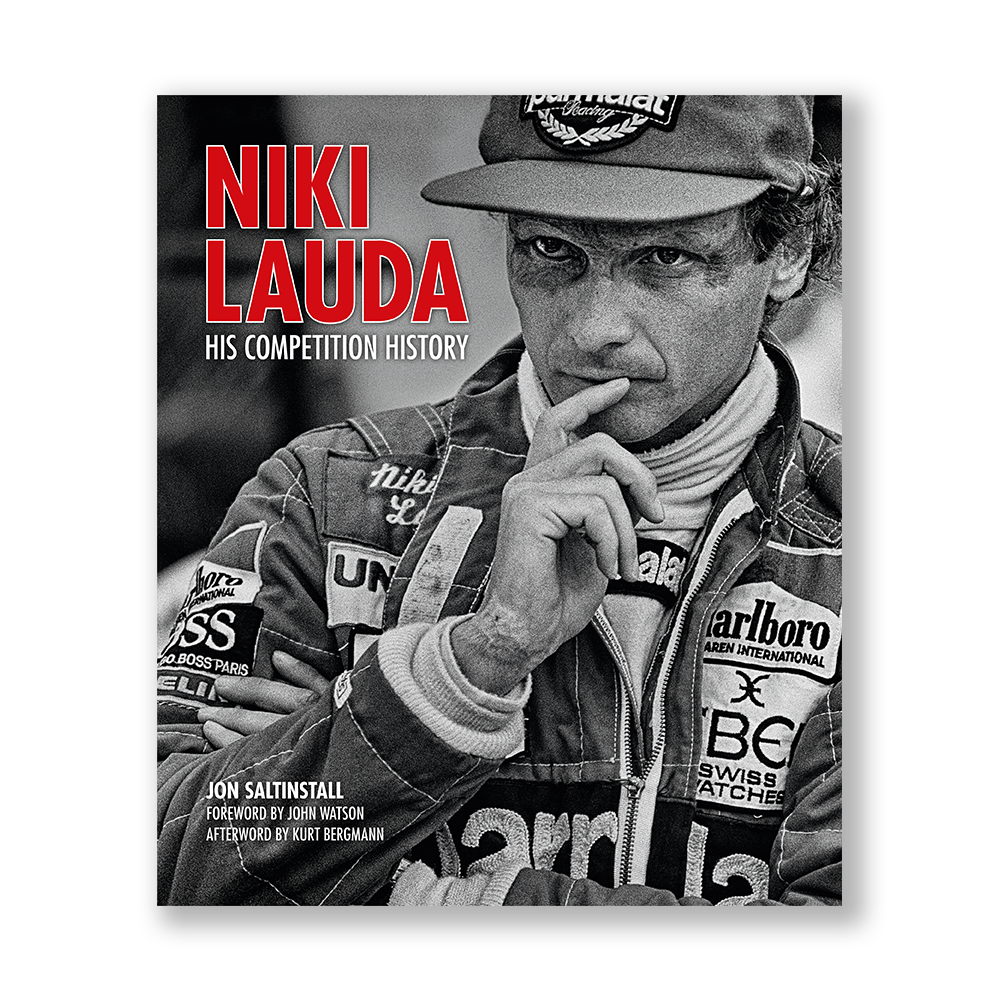
Having climbed a Mini and Porsche 911, I was not aware that Lauda’s first race saw him take on the annual six-hour event at the Nurburgring in the Mini, the youngest driver in the race, and though he retired, the days pounding round the famous circuit in preparation (taking turns driving and sitting alongside co-drover Lambert Hofer) stood him in good stead later on. That author Saltinshall has managed to track down a grainy picture of the Mini in the race sums up in a way the effort he has put into the book and his determination to cover all aspects of the Austrian’s career.
I had not realised that at one time Lauda had bought a Porsche 908/2 sportscar and raced that alongside his Formula Three campaign in 1970, the year he made his UK debut in the F3 race that supported the British Grand Prix at Brands Hatch in July – righting off his car in a crash in one of the heats on the Friday of the event. A lovely little gem of a fact tucked away in the text is that Lauda should have made his UK debut the weekend before at Croft in his Porsche, but took the offer of a paid drive in a BMW at the Nurburgring instead – ever the pragmatist.
The book continues in a similar vein right through to Lauda’s second, and final retirement in 1985, then also lists various outings – all non-competitive - over the following years. These included drives in an advisory role for BMW, in various historic cars, karting – and even a run in a Jaguar R2C Formula One car in 2002. Saltinshall also lists races where he appeared on an entry list but did not actually compete – a level of data we love and part of why we enjoyed the book so much.
This is not a book that it is easy to read through from front to back, but then it was probably never intended to be so. As a tribute to the career of Niki Lauda it is a fine piece of work, and one that even a short glance at will undoubtedly bring forth some unknown or long-forgotten fact or race.
Niki Lauda – His Competition History is a worthy edition to any motorsport bookshelf, and a timely reminder of one of the most notable drivers of the last fifty years or so, who left the sport for good last year.
SBN: 978-1-910505-46-5. Format: 280x235mm hardback with 376 pages and 500 photos, mainly colour.UK price: £60.00. https://www.evropublishing.com
Ferrari 250SWB – the Remarkable History of #2689 by Richard Heseltine
The Ferrari 250 GT SWB is among the most iconic of all Ferraris, and indeed the greatest of all sports cars, ever made. Brilliant on the road and near-invincible in period GT racing category, this model gave Ferrari the title for GT Manufacturers in 1960 and ’61 and is now one of the most coveted cars ever produced by Maranello.
 The 250 GT SWB was raced by established stars of the sport and ‘gentlemen drivers’ alike during an era when the term ‘amateur’ was not yet derogatory. The car with chassis number 2689GT, the subject of the latest in Porter Press’s Exceptional Cars Series, is a fine example of this bygone age: owner-racer Pierre Noblet would invariably be back at his desk at nine o’clock on the morning after a race weekend, and his driving partner Jean Guichet made the leap from amateur to professional while continuing to hold down a day job. In the Le Mans 24 Hours race in 1961, privateers Noblet and Guichet came home first in class and third overall, beaten only by two factory-run Ferrari 250 TRI/61s.
The 250 GT SWB was raced by established stars of the sport and ‘gentlemen drivers’ alike during an era when the term ‘amateur’ was not yet derogatory. The car with chassis number 2689GT, the subject of the latest in Porter Press’s Exceptional Cars Series, is a fine example of this bygone age: owner-racer Pierre Noblet would invariably be back at his desk at nine o’clock on the morning after a race weekend, and his driving partner Jean Guichet made the leap from amateur to professional while continuing to hold down a day job. In the Le Mans 24 Hours race in 1961, privateers Noblet and Guichet came home first in class and third overall, beaten only by two factory-run Ferrari 250 TRI/61s.
This entertaining 128-page book, priced at just £30, tells the story of 2689’s brief but bright competition career, and the 250 GT SWB more broadly.
Available from Porterpress.co.uk Cost £30. ISBN: 978-1-907085-87-1
Quest for Speed by Barry John
This is an excellent book, concentrating on man’s long term quest to travel ever faster on land.
Although this is a large subject, the book is exceptionally easy to read, simply because each car covered is given its own two page spread. Therefore the multiple attempts of, for example Sir Malcolm Campbell, get more than adequate coverage because each car, rather than the driver, gets in space.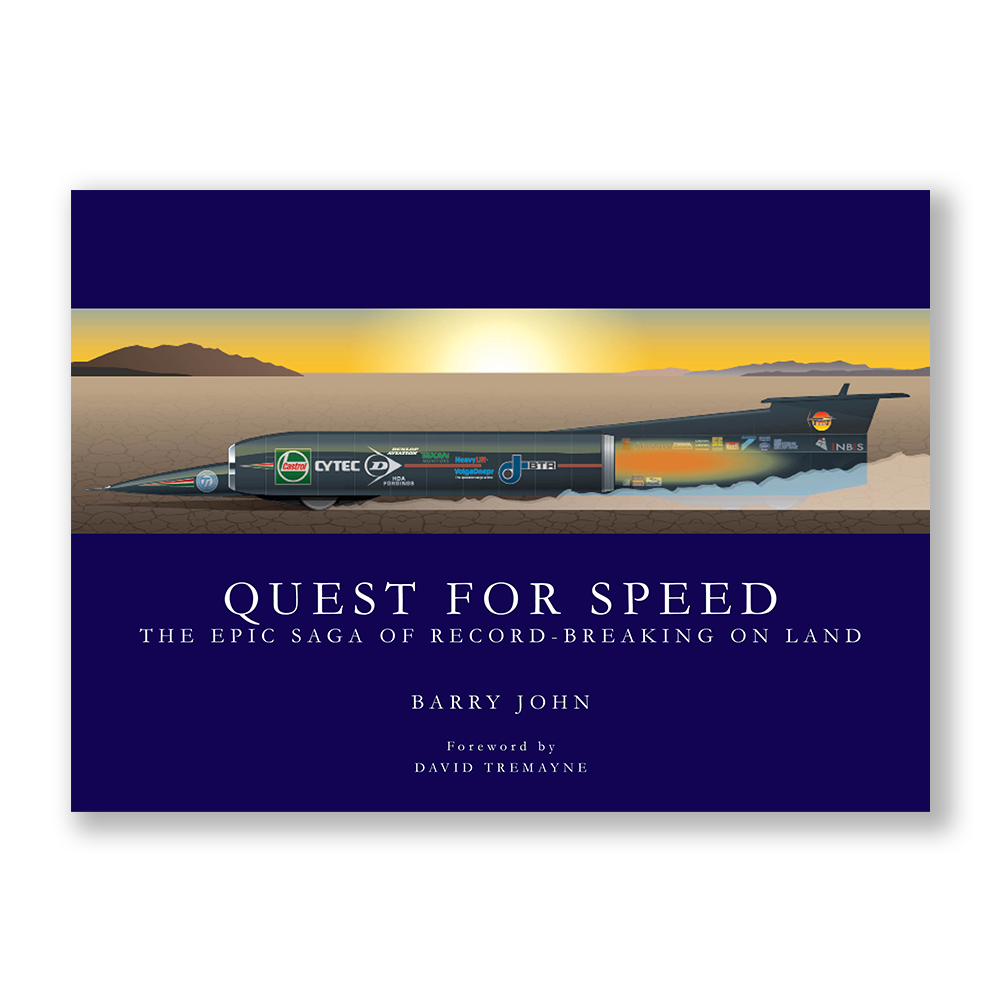
Some may be put off by the side-on drawings of every car, from Jenatzy’s ‘La Jamais Content’ at 65mph right the way through to Bloodhound’s struggle to achieve the magic 1000 mph. Names familiar to afficionados of the LSR such as Cobb, Segrave, Arfons, both Campbells pere et fils, and more latterly Don Wales and of course Richard Noble. Personally, we think the format works, the text doing most of the talking and scene-setting.
Also covered are more esoteric class and specialist records, such as the MG streamliners of the 1960s and the JCB Dieselmax, powered by two earth mover engines.
Quest for Speed is published by Evro Publishing (Evropublishing.com) and costs £30.00. ISBN: 978-1-910505-59-5. Format: 210x290mm (landscape) in hardback with 184 pages and over 350 illustrations.
A Race with Love and Death by Richard Williams
Whilst this book is undoubtedly a ‘racing story’ it is so much more than that. It tells the tale of Richard Seaman, brought up by a doting mother who had grown from humble beginnings, through a couple of well-considered marriages, to become a wealthy and well-connected socialite.
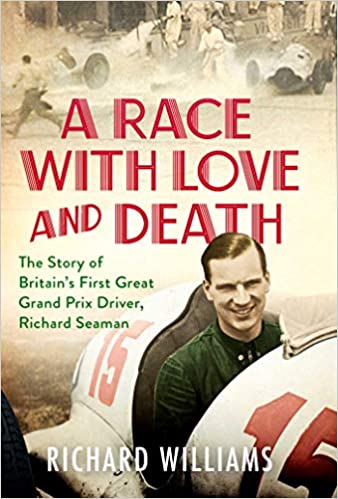 She doted upon her only son and prevailed upon her second husband to buy young Richard an ERA, at that time the car to have. Richard Seaman does not come out of this story of his early life with much credit. He cajoled, bullied and sulked his way into her very considerable fortune, persuading her to pay not only for his car, but also for all the expenses of racing it all over Europe. He met with some success which, ultimately brought him to the notice of the Mercedes Benz team in 1936.
She doted upon her only son and prevailed upon her second husband to buy young Richard an ERA, at that time the car to have. Richard Seaman does not come out of this story of his early life with much credit. He cajoled, bullied and sulked his way into her very considerable fortune, persuading her to pay not only for his car, but also for all the expenses of racing it all over Europe. He met with some success which, ultimately brought him to the notice of the Mercedes Benz team in 1936.
The difficulties that Seaman had with the Nazi sponsored Mercedes team are well documented in this book and photos of a young driver surrounded by swastika-wearing party officials still bring a shudder to the reader. That Seaman managed to compartmentalise his racing life and his understanding, even then, of the abhorrent practices going on in Germany during those times, speaks volumes.
It has long been understood that Richard Seaman was ‘a factory driver’ for Mercedes but this is not entirely the truth. Unlike the modern F1 we see now, driver line-ups were much more fluid, and for a considerable time he was little more than a reserve driver. Right up to the time of his death, the driver roster was constantly changing.
All of this put a huge strain on the relationship between Seaman and his family but it was his engagement and subsequent marriage to a young German girl, Erica Popp, whose father was busy building up the company that would become BMW, that would define the final chapter of his life. Erica was also used to an affluent and flamboyant lifestyle and the two quickly became a ‘golden couple’. Bearing in mind not only the fact that her darling son was marrying anyone was bad enough, but he was marrying a German at a time when war seemed likely if not inevitable was the final straw, and the mother and son became all but estranged.
Richard John Beattie Seaman set up home with his new wife close to her family in Germany. His drives with Mercedes became more frequent and his career was flourishing, albeit under the political clouds that were forming.
The Belgian Grand Prix was held in June of 1939 and, true to form, the rain at Spa Francorchamps was torrential. Seaman lost control at ‘Clubhouse Bend’ (which is midway between Blanchimont and the Bus Stop chicane on the modern circuit. The car went broadside into a tree, severely injuring Seaman, before catching fire catastrpophically. He survived for a short time in hostital before succumbing to his wounds. He was 26 years old and three months later Great Britain and Germany were at war.
The book is published by Simon and Shuster and costs a remarkably good value £20.00. Length 400 pages ISBN 13.948147 117 9358.




